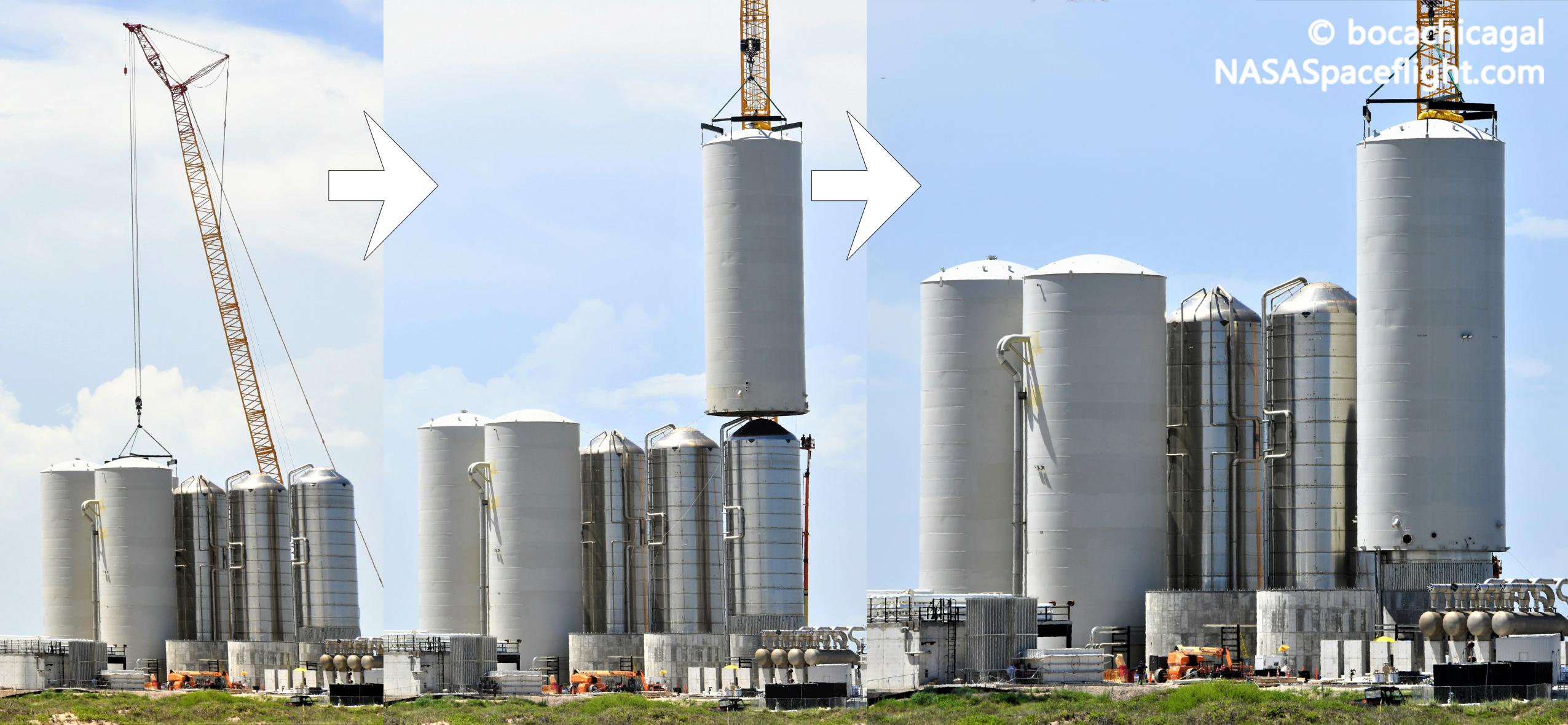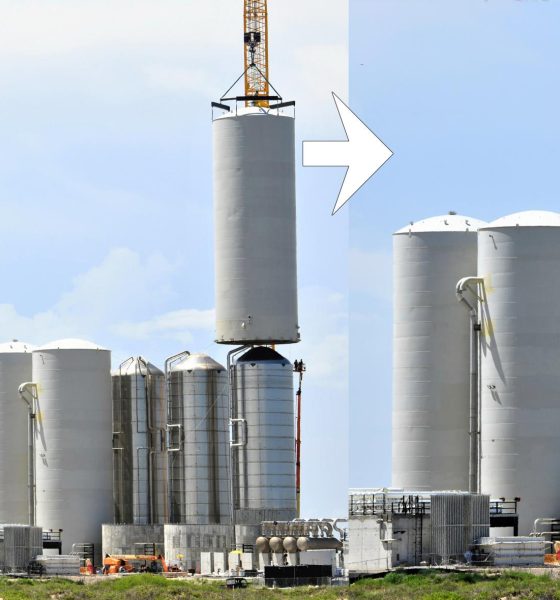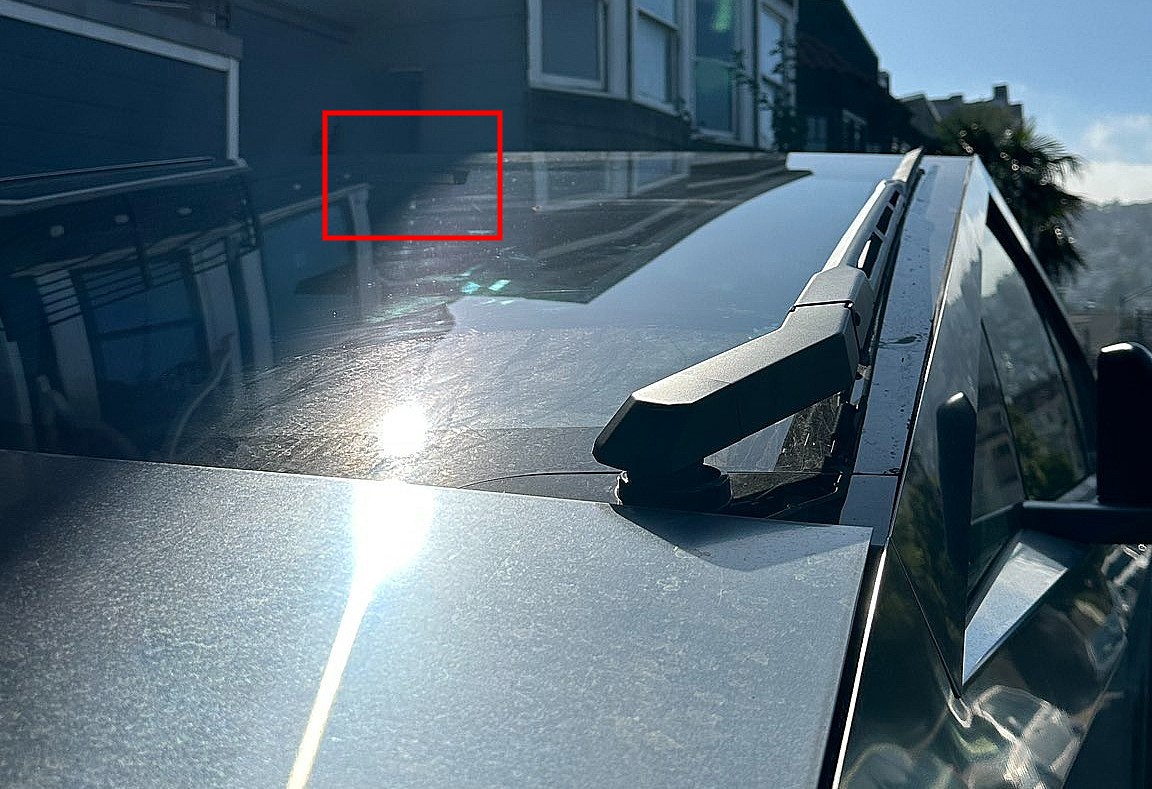

News
SpaceX ‘sleeves’ Starship-derived propellant tank for the first time – here’s why
In a small but important step towards activating a pad capable of launching the largest and most powerful rocket ever built, SpaceX has ‘sleeved’ one of its Starship-derived propellant storage tanks for the first time.
Starship is a fully-reusable, two-stage liquid rocket designed to ultimately cut the cost of orbital launch by at least one magnitude, opening the door for humanity’s sustainable expansion to Earth orbit, the Moon, Mars, and even beyond. To accomplish that lofty feat, it has to be a massive rocket. Measuring approximately 120m (~395 ft) tall and 9m (~30 ft) wide, Starship and Super Heavy will weigh on the order of 300 metric tons (~675,000 lb) when empty.
Once filled to the brim with cryogenic liquid methane (CH4) and liquid oxygen (LOx) propellant and gas, though, a two-stage Starship will easily weigh more than 5000 tons (11 million lb) shortly before and after liftoff. Further, SpaceX wants to be able to launch at least two Starships from Boca Chica in rapid succession. To meet the staggering needs of back-to-back Starship launches, SpaceX has thus had to design and build what will be the world’s largest launch pad tank farm.
Work on that tank farm is already well underway, though progress has been slower than expected. The site’s foundation and a few associated blockhouses were mostly completed by January 2021. By early April, the company had completed the first of at least seven steel propellant storage tanks at its Starship factory and rolled it to the launch pad for installation.
Notably, SpaceX chose to manufacture those storage tanks itself and ended up building structures virtually identical to the tanks that already make up most of flightworthy Starship and Super Heavy airframes. Depending on whether they’re meant to store liquid oxygen or methane, the seven tanks SpaceX is building are either 26 or 30 meters (85 or 100 feet) tall – though the concrete mounts they’re affixed to at the launch site are sized such that all storage tanks will have the same final height.
Of course, being made with the same tools and out of the same steel as Starship and Super Heavy, that means that SpaceX’s custom storage tanks are little more than 4mm (~1/6″) thick steel shells – about as bad as it gets for keeping cryogenic rocket fuel… cryogenic. If SpaceX were to simply use those unmodified tanks, it would be almost impossible to store Starship fuel for more than a few hours – and maybe just a few minutes – without it warming up past the point of usability.
As such, SpaceX’s final Starship tank farm design involves seven Starship-derived storage tanks and seven contractor-built tank sleeves. Measuring around 12m (~40 ft) wide and 40m (~130 ft) tall, those “cryo shells” will enclose all seven SpaceX-built tanks, allowing the company to fill the 1.5m (~5 ft) gap between them with an insulating solid, gas, or some combination of both. With those shells and insulation, SpaceX’s custom-built Starship tank form should be more than capable of storing cryogenic liquid oxygen and methane for days or even weeks.
As of August 5th, SpaceX has installed three of Starship’s custom ground supply equipment (GSE) tanks (with a fourth moved onsite on Thursday), moved two ‘cryo shells’ to temporary storage spots at the pad, and installed one cryo shell that actually turned out to be a million-gallon water tank. On Thursday, SpaceX ‘sleeved’ one of those storage tanks for the first time ever, marking an important milestone towards the activation of a tank farm capable of supporting Starship’s orbital launch debut. Another four sleeves are more or less complete, with the eighth and final sleeve likely just a week or two away from completion.
A fifth GSE tank is also more or less complete, leaving two more to go. However, with some basic math, it’s possible to determine that SpaceX’s orbital launch pad likely only needs five cryogenic tanks (three oxygen, two methane) – and possibly as few as four – to support Starship’s first orbital test flight(s). With SpaceX finally beginning to install tank sleeves, it’s possible that that four or five-tank milestone – and the first tests of SpaceX’s custom, unproven storage solution – are now much closer at hand.

News
Tesla aims to combat common Full Self-Driving problem with new patent
Tesla writes in the patent that its autonomous and semi-autonomous vehicles are heavily reliant on camera systems to navigate and interact with their environment.

Tesla is aiming to combat a common Full Self-Driving problem with a new patent.
One issue with Tesla’s vision-based approach is that sunlight glare can become a troublesome element of everyday travel. Full Self-Driving is certainly an amazing technology, but there are still things Tesla is aiming to figure out with its development.
Unfortunately, it is extremely difficult to get around this issue, and even humans need ways to combat it when they’re driving, as we commonly use sunglasses or sun visors to give us better visibility.
Cameras obviously do not have these ways to fight sunglare, but a new patent Tesla recently had published aims to fight this through a “glare shield.”
Tesla writes in the patent that its autonomous and semi-autonomous vehicles are heavily reliant on camera systems to navigate and interact with their environment.

The ability to see surroundings is crucial for accurate performance, and glare is one element of interference that has yet to be confronted.
Tesla described the patent, which will utilize “a textured surface composed of an array of micro-cones, or cone-shaped formations, which serve to scatter incident light in various directions, thereby reducing glare and improving camera vision.”

The patent was first spotted by Not a Tesla App.
The design of the micro-cones is the first element of the puzzle to fight the excess glare. The patent says they are “optimized in size, angle, and orientation to minimize Total Hemispherical Reflectance (THR) and reflection penalty, enhancing the camera’s ability to accurately interpret visual data.”
Additionally, there is an electromechanical system for dynamic orientation adjustment, which will allow the micro-cones to move based on the angle of external light sources.
This is not the only thing Tesla is mulling to resolve issues with sunlight glare, as it has also worked on two other ways to combat the problem. One thing the company has discussed is a direct photon count.
CEO Elon Musk said during the Q2 Earnings Call:
“We use an approach which is direct photon count. When you see a processed image, so the image that goes from the sort of photon counter — the silicon photon counter — that then goes through a digital signal processor or image signal processor, that’s normally what happens. And then the image that you see looks all washed out, because if you point the camera at the sun, the post-processing of the photon counting washes things out.”
Future Hardware iterations, like Hardware 5 and Hardware 6, could also integrate better solutions for the sunglare issue, such as neutral density filters or heated lenses, aiming to solve glare more effectively.
Elon Musk
Delaware Supreme Court reinstates Elon Musk’s 2018 Tesla CEO pay package
The unanimous decision criticized the prior total rescission as “improper and inequitable,” arguing that it left Musk uncompensated for six years of transformative leadership at Tesla.

The Delaware Supreme Court has overturned a lower court ruling, reinstating Elon Musk’s 2018 compensation package originally valued at $56 billion but now worth approximately $139 billion due to Tesla’s soaring stock price.
The unanimous decision criticized the prior total rescission as “improper and inequitable,” arguing that it left Musk uncompensated for six years of transformative leadership at Tesla. Musk quickly celebrated the outcome on X, stating that he felt “vindicated.” He also shared his gratitude to TSLA shareholders.
Delaware Supreme Court makes a decision
In a 49-page ruling Friday, the Delaware Supreme Court reversed Chancellor Kathaleen McCormick’s 2024 decision that voided the 2018 package over alleged board conflicts and inadequate shareholder disclosures. The high court acknowledged varying views on liability but agreed rescission was excessive, stating it “leaves Musk uncompensated for his time and efforts over a period of six years.”
The 2018 plan granted Musk options on about 304 million shares upon hitting aggressive milestones, all of which were achieved ahead of time. Shareholders overwhelmingly approved it initially in 2018 and ratified it once again in 2024 after the Delaware lower court struck it down. The case against Musk’s 2018 pay package was filed by plaintiff Richard Tornetta, who held just nine shares when the compensation plan was approved.
A hard-fought victory
As noted in a Reuters report, Tesla’s win avoids a potential $26 billion earnings hit from replacing the award at current prices. Tesla, now Texas-incorporated, had hedged with interim plans, including a November 2025 shareholder-approved package potentially worth $878 billion tied to Robotaxi and Optimus goals and other extremely aggressive operational milestones.
The saga surrounding Elon Musk’s 2018 pay package ultimately damaged Delaware’s corporate appeal, prompting a number of high-profile firms, such as Dropbox, Roblox, Trade Desk, and Coinbase, to follow Tesla’s exodus out of the state. What added more fuel to the issue was the fact that Tornetta’s legal team, following the lower court’s 2024 decision, demanded a fee request of more than $5.1 billion worth of TSLA stock, which was equal to an hourly rate of over $200,000.
Delaware Supreme Court Elon Musk 2018 Pay Package by Simon Alvarez
News
Tesla Cybercab tests are going on overdrive with production-ready units
Tesla is ramping its real-world tests of the Cybercab, with multiple sightings of the vehicle being reported across social media this week.

Tesla is ramping its real-world tests of the Cybercab, with multiple sightings of the autonomous two-seater being reported across social media this week. Based on videos of the vehicle that have been shared online, it appears that Cybercab tests are underway across multiple states.
Recent Cybercab sightings
Reports of Cybercab tests have ramped this week, with a vehicle that looked like a production-ready prototype being spotted at Apple’s Visitor Center in California. The vehicle in this sighting was interesting as it was equipped with a steering wheel. The vehicle also featured some changes to the design of its brake lights.
The Cybercab was also filmed testing at the Fremont factory’s test track, which also seemed to involve a vehicle that looked production-ready. This also seemed to be the case for a Cybercab that was spotted in Austin, Texas, which happened to be undergoing real-world tests. Overall, these sightings suggest that Cybercab testing is fully underway, and the vehicle is really moving towards production.
Production design all but finalized?
Recently, a near-production-ready Cybercab was showcased at Tesla’s Santana Row showroom in San Jose. The vehicle was equipped with frameless windows, dual windshield wipers, powered butterfly door struts, an extended front splitter, an updated lightbar, new wheel covers, and a license plate bracket. Interior updates include redesigned dash/door panels, refined seats with center cupholders, updated carpet, and what appeared to be improved legroom.
There seems to be a pretty good chance that the Cybercab’s design has been all but finalized, at least considering Elon Musk’s comments at the 2025 Annual Shareholder Meeting. During the event, Musk confirmed that the vehicle will enter production around April 2026, and its production targets will be quite ambitious.








